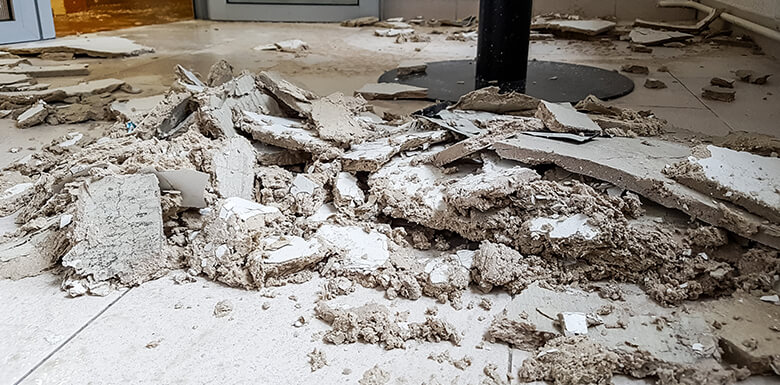August 16, 2019
When a Falling Ceiling Becomes Negligent
By Jonathan Damashek
Posted in

At home, you know the importance of keeping the premises safe for your family, guests, and anyone else who enters. Dangerous conditions could lead to serious injuries for your loved ones. Unfortunately, not all property owners share in your view of safety. Those responsible for protecting against injuries may shirk their duties, allowing hazards to create a risk. A falling ceiling is a particular concern for anyone underneath it, as the danger may not be in your line of sight. You may not look up in enough time to avoid large chunks of debris and other materials when they come crashing down.
Our team at Hecht, Kleeger & Damashek, P.C. understands that you may feel helpless when you suffer injuries on property. The thought of pursuing a claim can be daunting when you’re trying to recover. We’re here to provide the legal support you need at these difficult times. We have more than 75 years of combined experience representing victims who are hurt because of dangerous conditions on property, so we’re prepared to fight on your behalf. Please contact our office to set up a no-cost consultation with a New York premises liability attorney who can explain your rights. Call us today at 212-490-5700 or use our online contact form.
Liability for Dangerous Conditions on Property
New York law imposes a duty on owners and others in charge of property to keep their property safe for others. This legal obligation applies in stores, restaurants, office buildings, apartment complexes, and many other spaces. Falling ceilings and similar hazards can cause serious injuries, but victims may have rights through a premises liability claim. Liability is based upon negligence, so there are certain elements you must prove to recover compensation for your losses:
- The property owner or other responsible party had a duty to exercise reasonable care in maintaining the space;
- That person or entity breached this legal duty of care through careless acts or a failure to act;
- The breach of duty was a direct cause of the accident in which you suffered injuries; and,
- You sustained losses as a result of getting hurt.
Notice of the Hazard is Key
The above elements may seem straightforward, but you may encounter challenges when a dangerous ceiling causes injury. One of the first issues is what it means for a property owner to use reasonable care, since this is the standard under premises liability laws. The crucial factor is whether the responsible party had notice of the hazard, either through actual knowledge or constructive notice.
Actual notice covers a scenario where there were express reports or complaints about the unsafe ceiling. With constructive notice, the question is whether the property owner should have known about the hazard through exercise of reasonable care. For instance, the responsible party should know about a ceiling tile that was hanging for several days. The situation provides constructive knowledge to meet the notice requirement.
Compensation in Premises Liability Cases
When you prove the above four elements of negligence in a premises liability claim, you may be entitled to recover monetary damages for:
- Your medical bills and costs of treatment;
- Lost wages for any time you missed work;
- Pain and suffering;
- Losses that affect your quality of life and personal relationships;
- Emotional distress; and,
- Many others.
Contact a New York Premises Liability Lawyer to Discuss Your Injury Claim
As you can see, cases involving a falling ceiling or other hazards on property can be quite complicated. You must overcome numerous challenges to get the compensation you deserve, and your damages could be reduced if you’re partly to blame. For more information on our legal services, please contact Hecht, Kleeger & Damashek, P.C. to schedule a free case assessment at our office in Manhattan. Call us at 212-490-5700. Once we review your circumstances, we can determine the best strategy for proceeding with your premises liability claim.